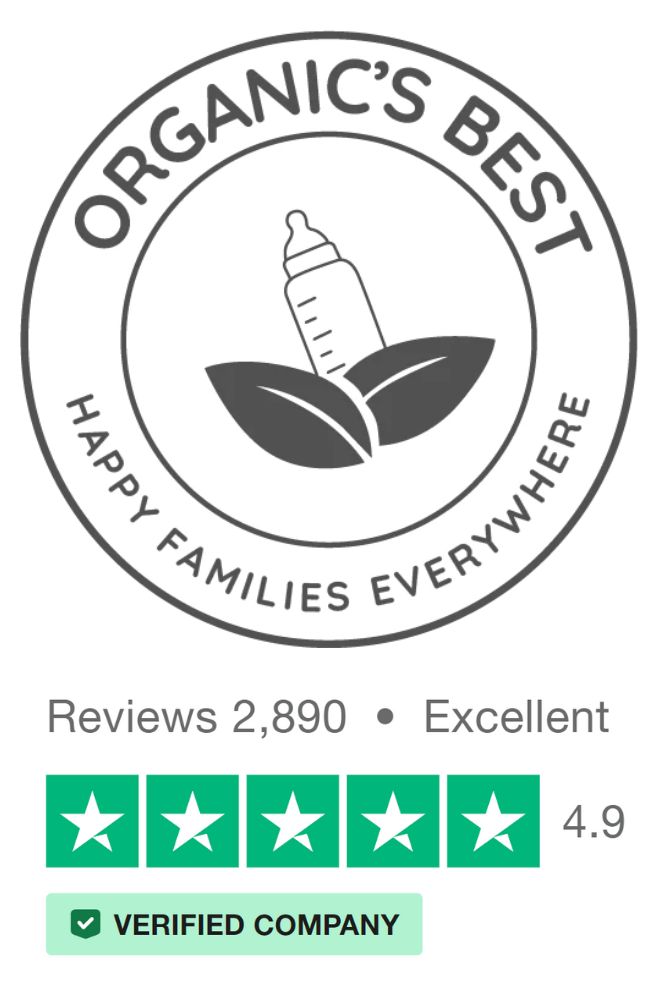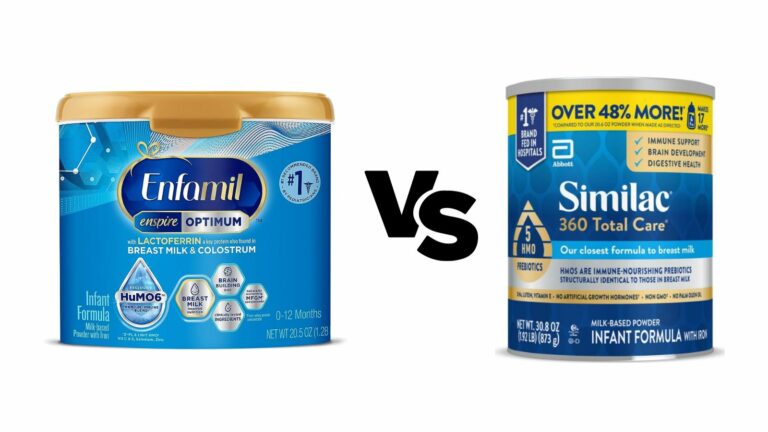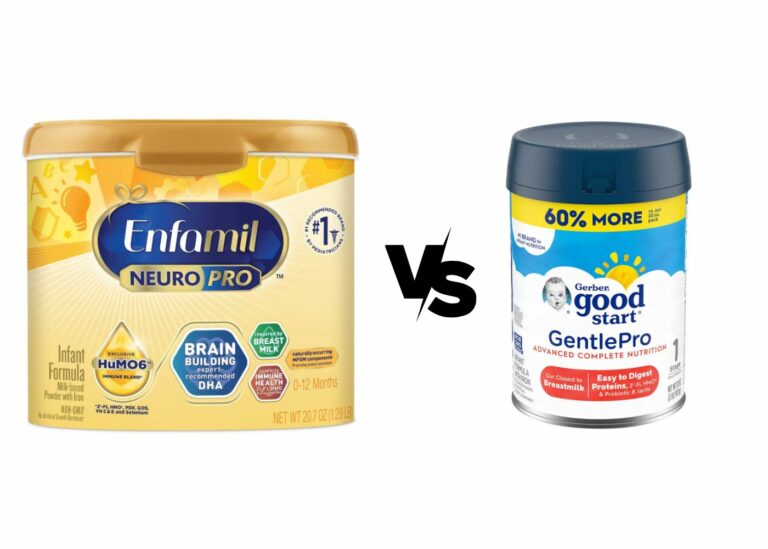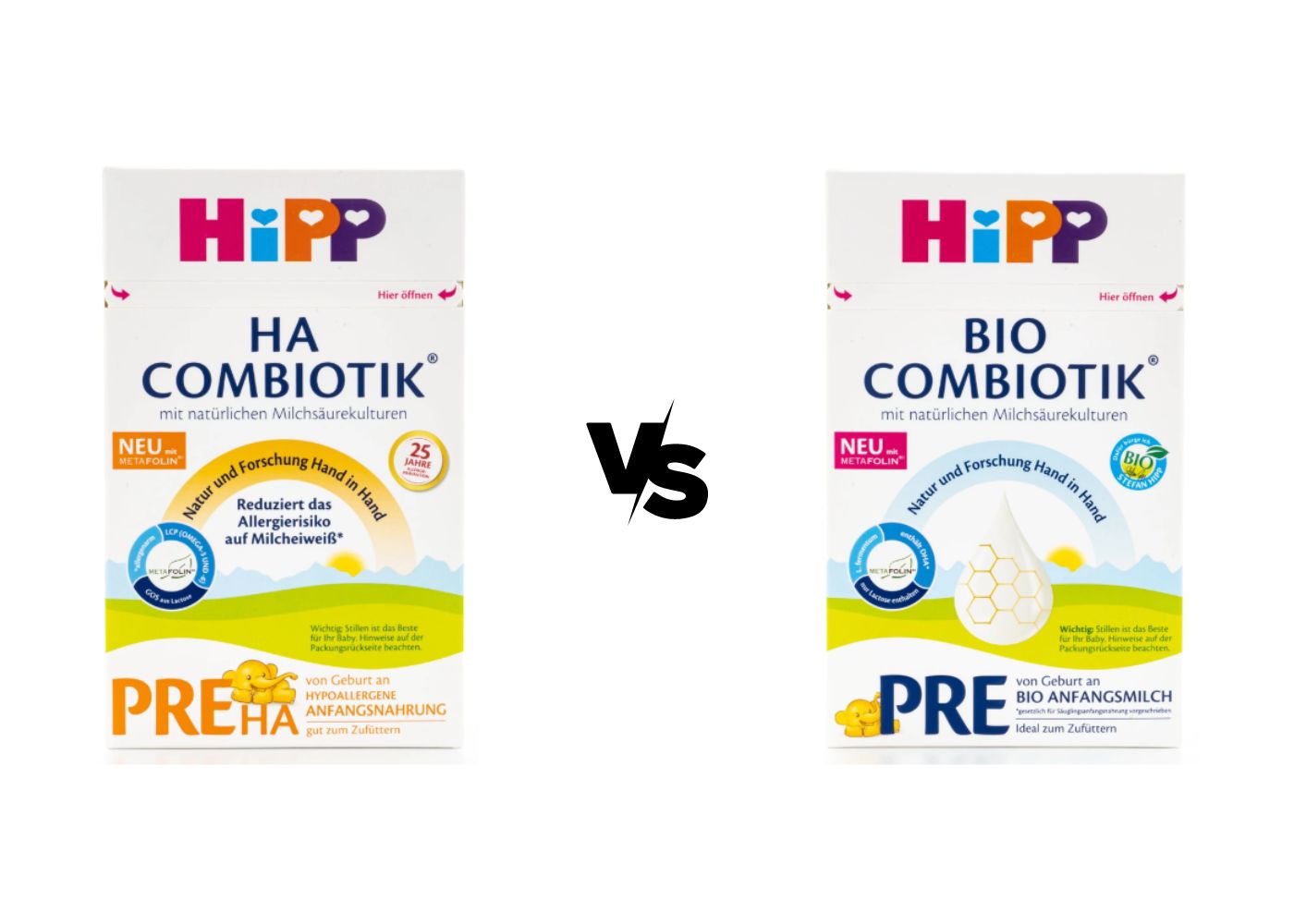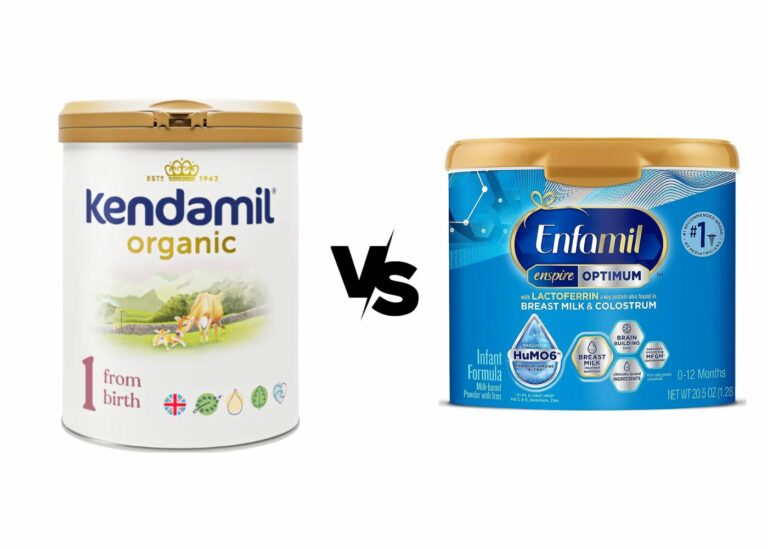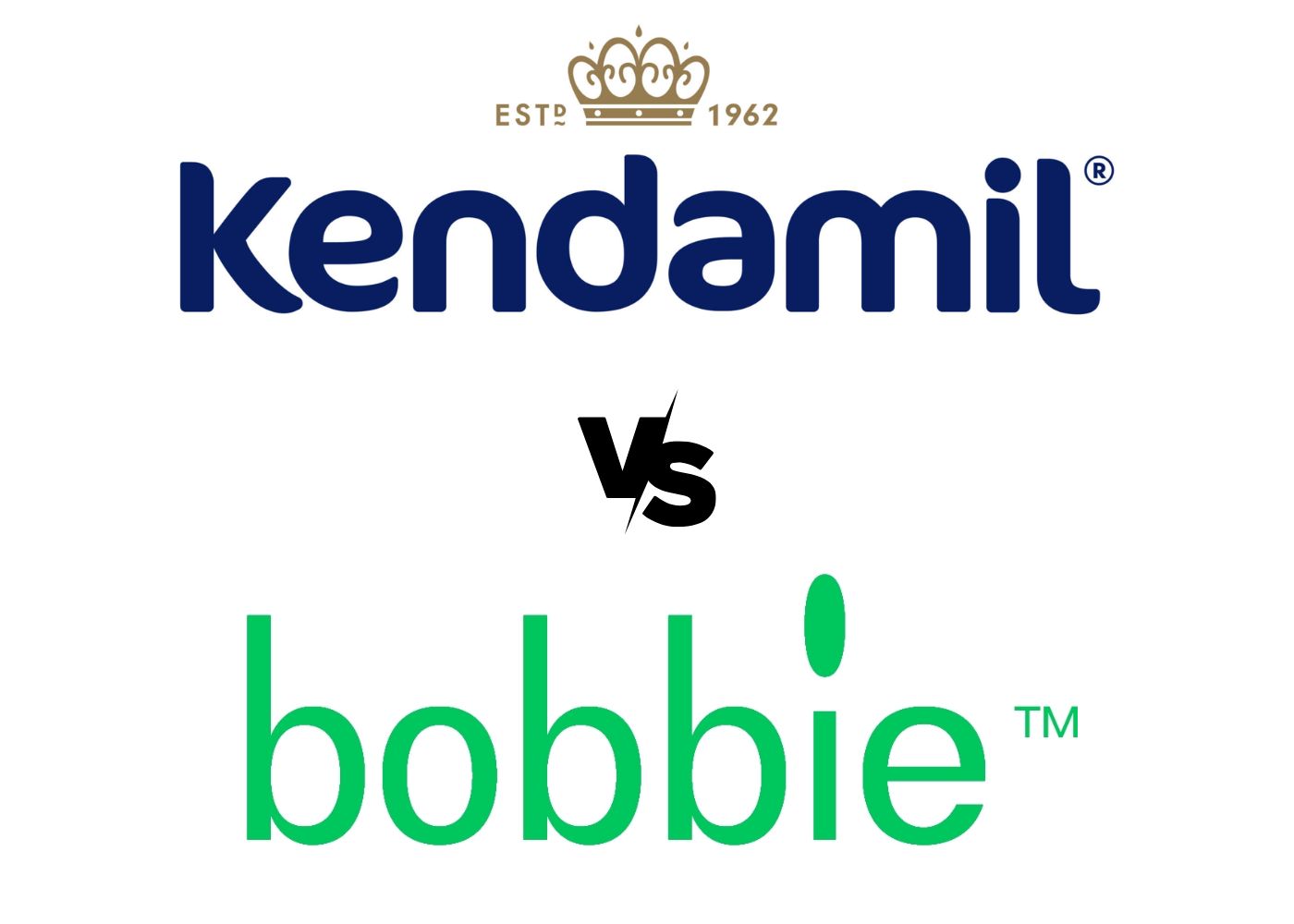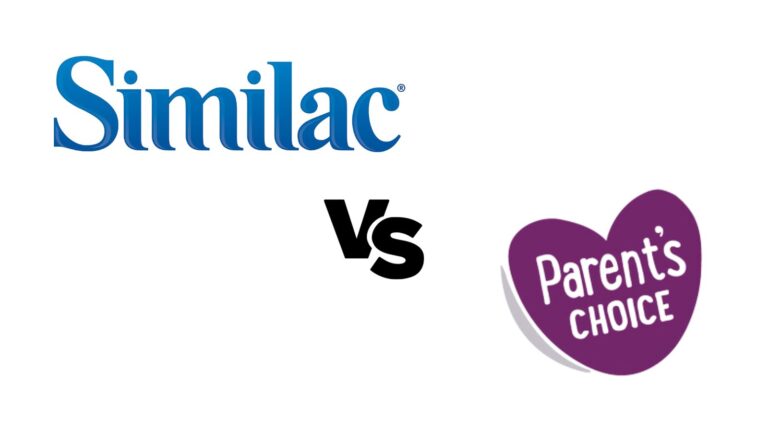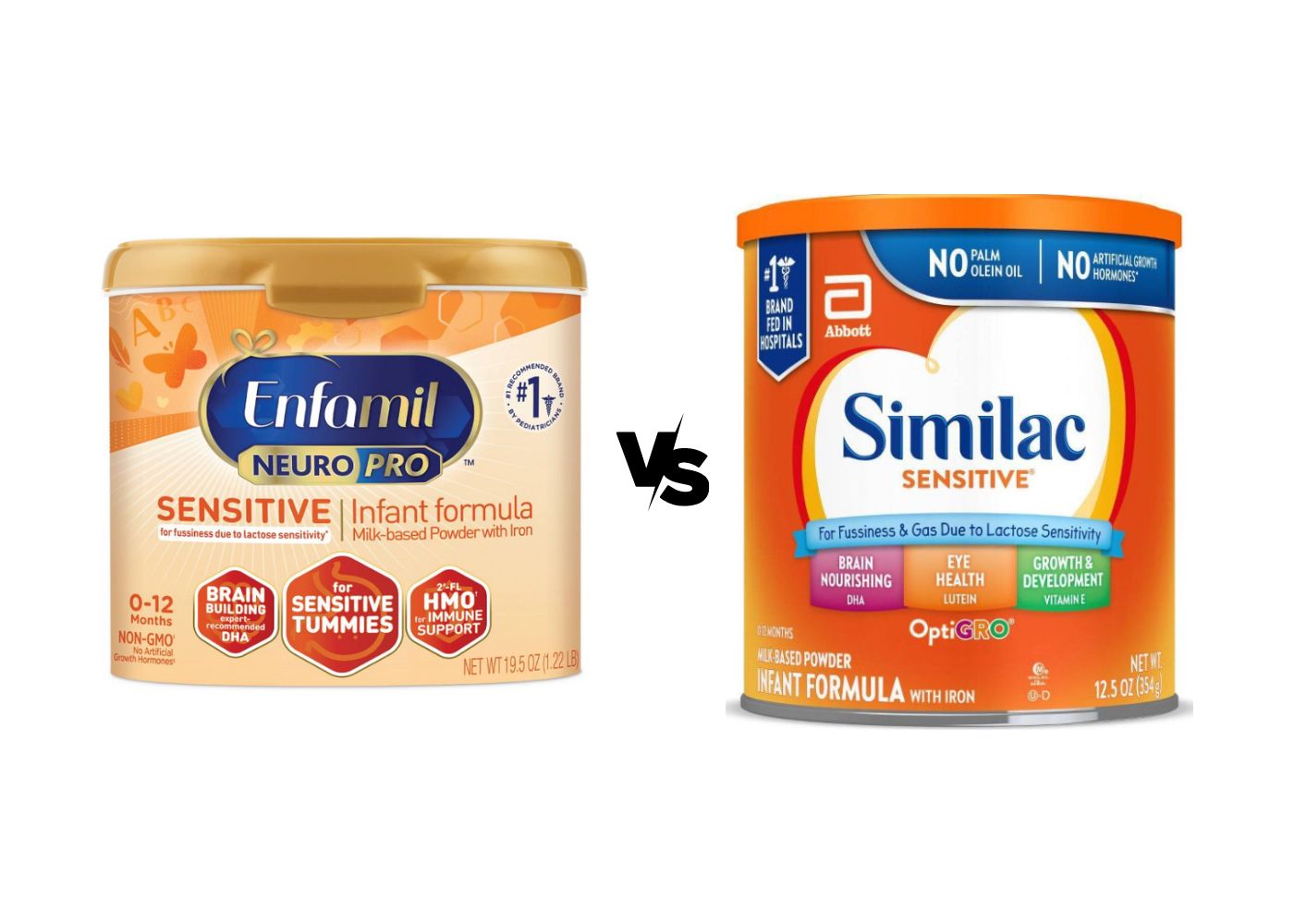
Key Differences Between Enfamil Sensitive and Similac Sensitive
| Enfamil Neuropro Sensitive | Similac Sensitive | |
|---|---|---|
| Protein Source | Milk Protein Isolate | Milk Protein Isolate |
| Whey-to-Casein Ratio | 60:40 | 18:82 |
| Carbohydrate Source | Corn Syrup Solids | Corn Syrup Solids, Sugar |
| Fat Source | Palm Olein, Coconut, Soy, High Oleic Sunflower Oils | High Oleic Safflower, Soy, Coconut Oils |
| DHA Source | Schizochytrium Sp. Oil | C.Cohnii Oil |
| Palm Olein Inclusion | Yes | No |
| Added Sugar | No | Yes |
| Human Milk Oligosaccharide (HMO) | Yes (2′-Fucosyllactose) | No |
Blwstore is supported by its audience. When you buy through links on our site, we may earn an affiliate commission.
We know choosing a high-quality formula is one of the most challenging decisions we make as parents.
This article will compare two popular formulas: Enfamil Sensitive vs Similac Sensitive.
We will analyze their ingredients and nutritional compositions to help you make an informed decision for your baby’s sensitive tummy.
Let’s get after it!
*Related reads: Similac Alimentum vs Nutramigen | Similac Alimentum vs Enfamil Gentlease
Our Short Answer
Similac Sensitive and Enfamil Neuropro Sensitive are formulas designed for babies with sensitive stomachs and problems digesting the lactose contained in conventional formulas.
After analyzing both, we choose Enfamil Neuropro for the following reasons:
1. The most important is that it has as an ingredient 2′-Fucosyllactose, which is a type of human milk oligosaccharide (HMO) that is found in breast milk and is partially fermented in the colon, behaving as a soluble prebiotic fiber.
2. Contains a more natural source of DHA than Similac.
3. Does not add sugar as Similac does.
4. Has a whey-to-casein ratio closer to breast milk than Similac.
The only reason to choose Similac Sensitive is that it does not add palm olein to its formula as Enfamil does.
However, we feel that the pros of Neuropro Sensitive far outweigh those of Similac Sensitive.
We recommend you look at the alternatives below in the article, as there are more natural and healthier formulas than Similac and Enfamil.
With over 100,000 orders delivered globally since 2019, Organic's Best offers clean, safe, and nutritionally rich formulas and snacks.
Free shipping over $100, commitment to freshness and authenticity.
- Express delivery in 2 to 5 business days
- Sourcing from European manufacturers
- Minimum shelf life of 6 months
- Climate-Controlled Warehouse
Give your little one the best start.
CODE 'BLW' for a 5% discount in all orders
At BLWStore, we may earn a commission from some of the products featured on our website through affiliate partnerships with retailers. We want to be transparent with our readers and let you know that we do not receive any products for special consideration. The commission we earn helps support our website and allows us to continue providing helpful information and product recommendations. Thank you for your support!
Overview of the Two Formulas
Enfamil NeuroPro Sensitive is for sensitive stomachs with MFGM, Omega 3 DHA, and prebiotics.
Similac Sensitive is for sensitive stomachs, supports brain and eye development, and is commonly used in hospitals.
Both formulas are unsuitable for infants with galactosemia.
Enfamil Sensitive
Enfamil NeuroPro Sensitive is a mild lactose formula offering easy-to-digest proteins, tailor-made for sensitive tummies and lactose-intolerant babies (unsuitable for infants with galactosemia).
It has a unique combination of MFGM and Omega 3 DHA, generally found in breast milk.
Emerging evidence from clinical studies suggests that MFGM in infant formula may enhance cognitive development similarly to breast milk.
Additionally, Enfamil Sensitive contains prebiotic and probiotic ingredients, demonstrating its focus on nutrition and promoting better gut health.
Similac Sensitive
Similac Sensitive is an easily digestible, milk-based formula engineered specifically for sensitive stomachs.
It provides comprehensive nutrition for babies experiencing fussiness and gas due to lactose sensitivity.
This brand focuses on supporting brain and eye development with its unique blend of nutrients.
Similac prides itself as the most widely adopted brand used in hospitals.
Like Enfamil Sensitive, it’s not suitable for infants or children with galactosemia.
*Related: Similac Pro-Sensitive vs Enfamil Gentlease | Enfamil Neuropro Gentlease vs Similac Pro Sensitive
Nutritional Composition
Enfamil NeuroPro Sensitive and Similac Sensitive use milk protein isolate as a protein source.
Enfamil has a whey-to-casein ratio of 60:40, closer to breast milk.
Enfamil uses corn syrup solids for carbohydrates, while Similac adds sugar.
Enfamil includes palm olein oil, while Similac uses high oleic safflower oil.
Protein Content
Enfamil’s NeuroPro Sensitive recipe uses milk protein isolate as a protein source, formulated to be gentle on your baby’s developing abdominal system.
Similac Sensitive also employs milk protein isolate in its formulation. Each formula’s serving size of about 5 fl oz provides 2.2 grams and 2.1 grams of protein, respectively.
Being conventional formulas, both use milk protein isolate and not hydrolyzed protein.
However, there is a significant difference between both in their whey to casein ratios:
Similac Sensitive uses a 18:82 whey-to-casein ratio.
Enfamil Neuropro Sensitive uses a 60:40 whey-to-casein ratio.
Breastmilk has a 60:40 whey-to-casein ratio, making Enfamil Sensitive a better option, since whey is easier and faster to digest than casein.
Carbohydrate Content
Carbohydrates in the Enfamil Sensitive formula come from corn syrup solids with a total carbohydrate content of around 10.9 grams per every 5 fl oz serving, making it an excellent energy source for growing infants.
On the other hand, Similac Sensitive uses a combination of corn syrup and sugar as its carbohydrate sources. It matches Enfamil with the same approximate carbohydrate content per serving, i.e., 10.9 grams.
Both formulas use corn syrup solids as their carb sources, and Similac adds extra sugar.
Corn syrup is not the best carb source (maltodextrin or other starches are a better option, corn syrup solids are too sweet and have more sugar content) but it is a valid option when lactose is not.
The fact that Similac adds extra sugar on top of the corn syrup solids makes it a worse option.
Fats and Oils
The fat content in Enfamil Sensitive is sourced from palm olein, coconut oil, soy oil, and high oleic sunflower oils. It also adds Mortierella Alpina Oilii and Schizochytrium Sp. Oil for DHA and ARA. These oils are known for their health benefits, including omega-3 and 6 fatty acids. The amount of fat per serving is around 5.3g.
Similac Sensitive derives its fats from a blend of high oleic safflower oil, soy oil, coconut oil alongside nutrients C.Cohnii Oil (a source of DHA) and M.Alpina Oil (a source of ARA). Similac contains slightly more fat per serving than Enfamil at about 5.4g per serving.
Similac Sensitive wins in fat content, thanks to not using palm olein.
Enfamil, however, uses Schizochytrium Sp. Oil, a better source of DHA than C.Cohnii Oil, which Similac uses.
Vitamins, Minerals, and Other Ingredients
Both Enfamil Sensitive and Similac Sensitive provide a broad array of vitamins and minerals to ensure optimal growth. These include Vitamin A, B1, B2, B6, B12, C, D, E , K1 Folic Acid, Calcium, Iron, Phosphorus, Potassium, and many others. Both formulas include important trace elements such as Zinc and Selenium, promoting your baby’s overall health.
However, there are some slight differences. For instance, per every 5 fl oz serving:
– Enfamil offers slightly more Vitamin D (70 IU) compared to Similac (60 IU).
These differences are quite minimal and may not significantly impact the overall nutrition your baby receives.
No substantial differences in vitamins or minerals.
Probiotics and Prebiotics
Enfamil Sensitive comes on top for using an HMO (human milk oligosaccharide), the best kind of prebiotic for babies.
Both Enfamil Sensitive and Similac Sensitive recognize the importance of promoting a healthy gut in infants, hence their inclusion of prebiotics in their formulas.
Enfamil Sensitive includes 2′-Fucosyllactose (2’FL), an ingredient that acts as a human milk oligosaccharide (HMO). HMOs are known to support immune development by helping to create an environment suitable for beneficial gut bacteria.
Similac Sensitive includes Short-Chain Fructooligosaccharides, a prebiotic that helps promote digestion and enhance calcium absorption.
Best Places to Buy Enfamil Sensitive and Similac Sensitive


Enfamil Sensitive
Buy Enfamil Sensitive at Target
Buy Enfamil Sensitive at Walmart
Similac Sensitive
Buy Similac Sensitive at Target
Buy Similac Sensitive at Walmart
What are the best alternatives to Enfamil Sensitive and Similac Sensitive?
Hipp HA Combiotic Infant Formula: This hypoallergenic formula is ideal for babies at risk of developing allergies. The protein in Hipp HA is hydrolyzed into smaller sizes, making it easier to digest while reducing allergic reactions. *Read: Hipp HA vs Similac Alimentum
Hipp Comfort Milk Formula and Hipp Anti-Reflux: These formulas are designed with unique ingredients that suit infants experiencing digestive disturbances such as colic or reflux. *Read: Hipp Comfort vs Anti-Reflux
High-quality goat milk formulas like Kabrita or Jovie might be suitable if your baby has difficulties tolerating cow’s milk protein but does not have severe allergies or cow’s milk protein allergy (CMPA). These goat milk formulas contain naturally gentle proteins and easier to digest than those found in cow’s milk. *Read: Kabrita vs Jovie
Conclusion
Our winner in this comparison between Enfamil Sensitive and Similac Sensitive is Enfamil for the reasons we stated earlier.
We hope this post has helped you make an informed decision. We strongly encourage you to keep researching if you have the time by looking at the alternatives and exploring our infant formulas section for more comparisons and articles on infant formula.
See you around!
We’re Maria and Alberto, a married couple and educators who are nutrition enthusiasts. Even before we had kids, we were already crazy about nutrition.
We’d read scientific articles, watch videos from nutritionists, and spend hours listening to nutrition podcasts.
Today, we continue doing this, but in a different way, as we’ve learned to sift through the noise and trends. Nutrition, like any other field of knowledge, the more you read and learn, the more you develop a comprehensive understanding of reality, and that’s what has happened to us.
Before having our first child, we focused on learning everything we could about child nutrition, using the same techniques we had already employed, backed by our extensive knowledge in nutrition.
Our mission is to help other parents with their children’s nutrition, to help them become the best versions of themselves.
If we are what we eat and drink, which is absolutely true, let’s do it right!


